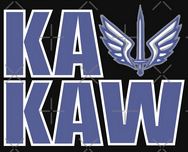Podcast: Play in new window | Download
Subscribe: RSS
The loud and large crowd of more than 31,000 fans at the spring pro football game in St. Louis this past Saturday afternoon sounded like a freight train to the opposing team. The team’s rabid supporters joyfully tossed rolls of blue and white toilet paper into the air whenever their beloved home team scored a touchdown. The crowd was totally engaged in this football game.
Some of these fans came dressed in electric blue and white gear. They reminded me of Middle America’s version of the former NFL Oakland Raiders.
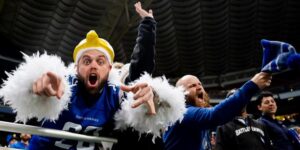
For as glorious as the St. Louis BattleHawks of the fledgling United Football League (UFL) looked this weekend, the spring football league’s other seven cities need help – immediately!
The St. Louis BattleHawks are the shining star in yet another slowly-sinking spring pro football league.
No more excuses for spring professional football in 2024
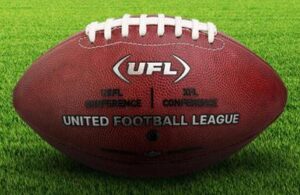
With college basketball and The Masters golf tournament out of the way, I turned my attention on Saturday afternoon to watching my first UFL spring football game of the season.
I have been a quietly hopeful supporter of spring professional football. Though most football fans would agree that they prefer to attend and watch games played in the fall as temperatures moderate, some factions continue to believe there is a niche for spring pro football.
The truth is that the concept of spring professional football continues to be tested in hopes that, finally, one of these leagues can coax the NFL into a future partnership.
Let’s face it. If the UFL (like others) can eventually hitch their wagon to the NFL’s very deep pot of gold, the pioneers will reap some tremendous returns on their investment.
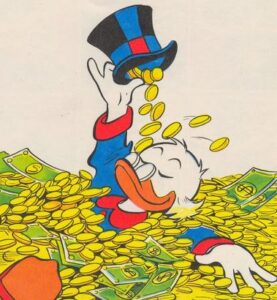
Just like the NFL, the real money for the UFL franchise owners will come from the television revenues. If the UFL’s ownership group can simply break-even with the high costs of operating its football franchises, the television money and (to a lesser extent) merchandising revenues will be where the future upside is.
Don’t hold your breath, though.
Five years of Spring Football failures
In the past five years, we have seen the hopeful beginnings and eventual failure of:
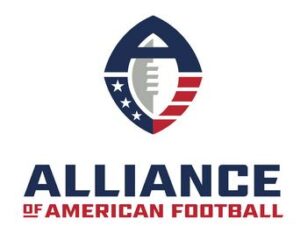
AAF – The Alliance of American Football (2019) – Teams in Arizona, Atlanta, Birmingham, Memphis, Orlando, Salt Lake City, San Antonio, and San Diego. Play was suspended after eight games of the inaugural ten-game season. Bankruptcy ensued.

XFL 2.0 (2020) – This was the second attempt for the XFL (the first was 2001) and owner, Vince McMahon. Teams were located in Dallas, Houston, Los Angeles, New York City, Seattle, St. Louis, Tampa, and Washington, DC. Play suspended after just five weeks of play. COVID-19 issues were cited, and the league filed for bankruptcy in April, 2020.
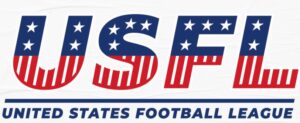
USFL 2.0 (2022 and 2023) – The original USFL (1983-1985) failed after moving to a fall schedule to compete against the NFL. The 2022 reincarnation of the USFL was 100% owned by Fox Sports. In 2022, all regular season games were hosted in Birmingham, Alabama. Reports were that Fox Sports spent more than $70 million to launch the league. In 2023, the USFL returned and played games in three of its eight markets (Birmingham, Memphis, and Detroit) plus a regional site in Canton, Ohio. Teams in Houston, New Jersey, New Orleans, Philadelphia, and Pittsburgh never played a single game in their home cities. At the end of 2023, the USFL agreed to a merger with the XFL (Version 3.0) in 2024.

XFL 3.0 (2023) – The twice-failed XFL was purchased from Vince McMahon by his former wresting superstar-turned-movie-star Dwayne “The Rock” Johnson and his ex-wife, Dani Garcia. In 2023, the XFL played in eight local markets (Arlington, Texas, Houston, Las Vegas, Orlando, San Antonio, St. Louis, Seattle, and Washington, D.C.). The XFL lost a reported $60 million last season. At the end of 2023, the XFL owners agreed to merge with the USFL (owned by Fox Sports) to create the new United Football League beginning in 2024.
Here we go again…

The United Football League (UFL) is off to a shaky start in 2024 as seven of the eight teams are failing at the gate.
With the lone exception of the St. Louis BattleHawks (averaging about 36,000 fans in their first two home games), the UFL’s other seven teams have been springtime duds – just like in previous years. After the first four weeks of the season, four of the eight UFL teams are averaging less than 10,000 fans per home game. The three next best teams pull between 10-15,000 paying customers per home game.
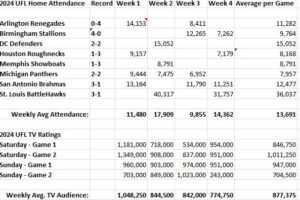
With most UFL general admission tickets priced at a fan-friendly cost of $20, there is insufficient revenue being generated by the majority of teams to cover the weekly costs of operation. Those include the stadium lease costs, game-day stadium workers, full-time staff workers, and many other expenses associated with team operations.
Only St. Louis is (perhaps) turning a profit after Week #4 as the UFL moves to the halfway point of Season One this coming weekend.
Why is St. Louis drawing more than double the amount of fans than the other seven teams and what can the other teams do to spark more interest?
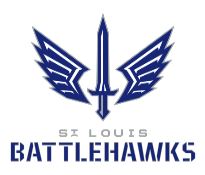
The St. Louis area fans shower the UFL BattleHawks with so much love and support for a very good reason. The city and region are trying to show the NFL that they erred in moving the St. Louis Rams franchise to Los Angeles after the 2015 NFL season ended.
The Hello/Goodbye Rams
Prior to moving to St. Louis in 1995, the NFL’s Rams had lackluster fans support playing in a cavernous half-empty stadium in (ironically) Los Angeles. The Rams’ then-team owner (Georgia Frontierre) agreed to move the team to St. Louis in 1995. As part of the deal, a 30% share of the team was sold to Missouri billionaire Stan Kroenke. He retained a right of first refusal to buy the entire team and eventually became the lone owner of the Rams franchise in 2010.
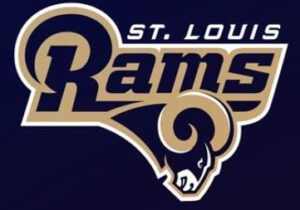
After coming to the Gateway City in 1995, the St. Louis Rams played to enthusiastic sell-out crowds in the city’s new downtown domed stadium with a 65,000 seat capacity. On the field, the St. Louis Rams became a Super Bowl winner in 1999 featuring quarterback Kurt Warner’s “Greatest show on Turf” downfield passing game.
Though the St. Louis Rams had become a success, the NFL still wanted a football team to be located in the #2 television market of Los Angeles. The St. Louis Rams were playing in the 21st largest television market. After twenty years of rabid fan support and success in St. Louis, team owner Stan Kroenke dramatically moved the Rams franchise back to Los Angeles after the end of the 2015 NFL season.
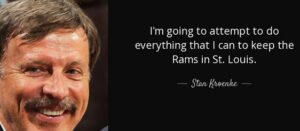
St. Louis football fans are still in shock after the Ram’s team owner’s dirty trick almost ten years ago.
The region feels like the NFL “used” St. Louis for the 20 years of Rams football. It appeared that Rams team owner Stan Kroenke may have been planning a move back to Los Angeles soon after he assumed control of the team in 2010. After the team left St. Louis, the city sued the Rams’ owner for (among other things) breach of contract. Six years later, the parties reached a financial settlement in 2021 with the City of St. Louis receiving nearly $800 million.
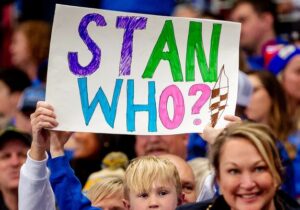
In 2023, the XFL (in what turned out to be their smartest move) brought professional football back to St. Louis. The team negotiated a rather expensive lease to play their spring football games in the downtown domed football stadium (now called “Dome at America’s Center”). Now in their second year, the St. Louis BattleHawks spring pro football franchise has been a big hit with local football fans.
“KaKaw” is the Law in St. Louis
Football fans in St. Louis had something to support and cheer about once again. The BattleHawks supporters even developed their own unique bird-like war cry.

The city has fallen in love with its new football team which they feel comfortable is not going to be taken away from them anytime soon.
The UFL’s St. Louis BattleHawks fans refer to their football stadium as the “BattleDome”. They regularly chant a variation of “Kroenke Stinks” (use your imagination) at every home game, too.
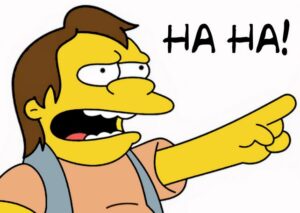
The local football fans will never forgive the NFL’s Rams’ owner for walking away from St. Louis. The fans are sending a message to the NFL to show how much St. Louis loves pro football.
Alas, this “Revenge” motivation doesn’t help the UFL’s other seven markets
There are four UFL franchises located in current NFL markets.
They are the Arlington Renegades (Dallas Cowboys), Houston Roughnecks (Houston Texans), DC Defenders (Washington Football Team), and Michigan Panthers (Detroit Lions). All of the NFL franchises in those markets (with the possible exception of Washington) have excellent fan support. The UFL’s spring football teams pose no serious threat to the established NFL franchises. That also translates to less local media interest and exposure, too.
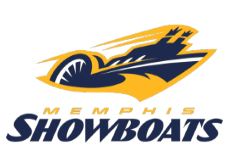
Unlike St. Louis, the other three UFL cities (Birmingham Stallions, Memphis Showboats, and San Antonio Brahmas) have never been home to an NFL franchise. They have, though, been host to one or more previous failed attempts at spring or fall football. Football fans in Birmingham, Memphis, and San Antonio have been burned before. They may feel jaded and be slow to warm-up to the UFL this time around.
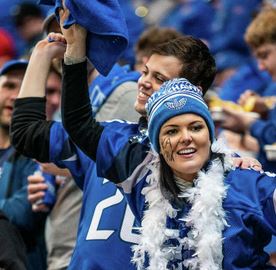
Unfortunately for the UFL, only the St. Louis market harbors such a unique and intense “We’ll show ‘em!” attitude toward the National Football League right now.
Don’t forget the I-70 West Tomahawk chop
There is still one NFL team left in the state of Missouri. Just 250 miles to the west down I-70 are the NFL champion Kansas City Chiefs. Unlike St. Louis, team ownership of Kansas City’s NFL franchise has rebuffed any offers to move their team after becoming a part of the league in 1970.
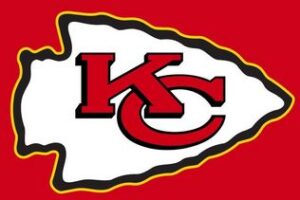
Football fans in St. Louis are painfully aware that Kansas City’s recent success in winning multiple Super Bowls has occurred after the Rams bolted for California. Double ouch!
Football fans in St. Louis and the “Show Me” state of Missouri have embraced the UFL’s BattleHawks for reasons which are unique to their local market.
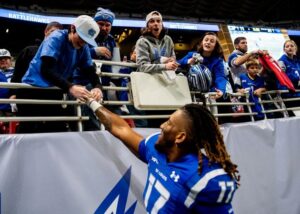
The other seven UFL cities must find a way – quickly – to create some of their own local marketing magic if this latest spring pro football venture is going to survive into Year #2 in 2025.
KaKaw!

